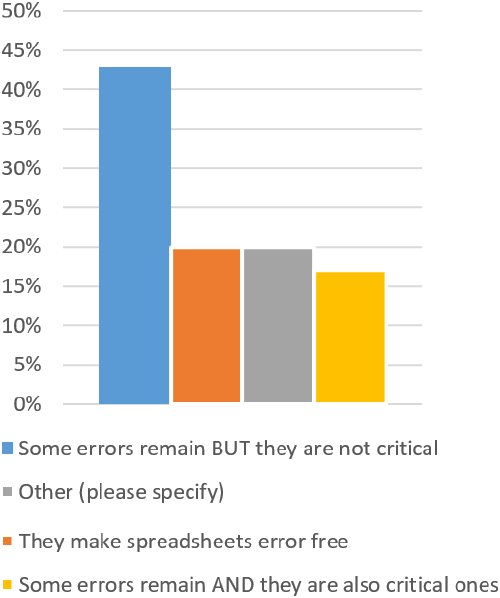Authors
Sohon Roy, Felienne Hermans, & Arie van Deursen
Abstract
Despite being popular end-user tools, spreadsheets suffer from the vulnerability of error-proneness.
In software engineering, testing has been proposed as a way to address errors. It is important therefore to know whether spreadsheet users also test, or how do they test and to what extent, especially since most spreadsheet users do not have the training, or experience, of software engineering principles.
Towards this end, we conduct a two-phase mixed methods study. First, a qualitative phase, in which we interview 12 spreadsheet users, and second, a quantitative phase, in which we conduct an online survey completed by 72 users.
The outcome of the interviews, organized into four different categories, consists of an overview of test practices, perceptions of spreadsheet users about testing, a set of preventive measures for avoiding errors, and an overview of maintenance practices for ensuring correctness of spreadsheets over time.
The survey adds to the findings by providing quantitative estimates indicating that ensuring correctness is an important concern, and a major fraction of users do test their spreadsheets. However, their techniques are largely manual and lack formalism. Tools and automated supports are rarely used.
Sample

We observe that 43% of the respondents state that non-critical errors still remain in their spreadsheets, even after whatever testing practice they follow.
A further 17% of the respondents paint a graver picture by stating that even critical errors remain in their spreadsheets after they perform testing.
In the interviews, only 3 out of 12 participants mentioned that they were satisfied with their testing activities.
These results imply that although testing is common among the spreadsheet users, the quality of their tests is not satisfactory leaving ample scope of improvement.
Publication
2017, Software Analysis, Evolution and Reengineering (SANER), March
